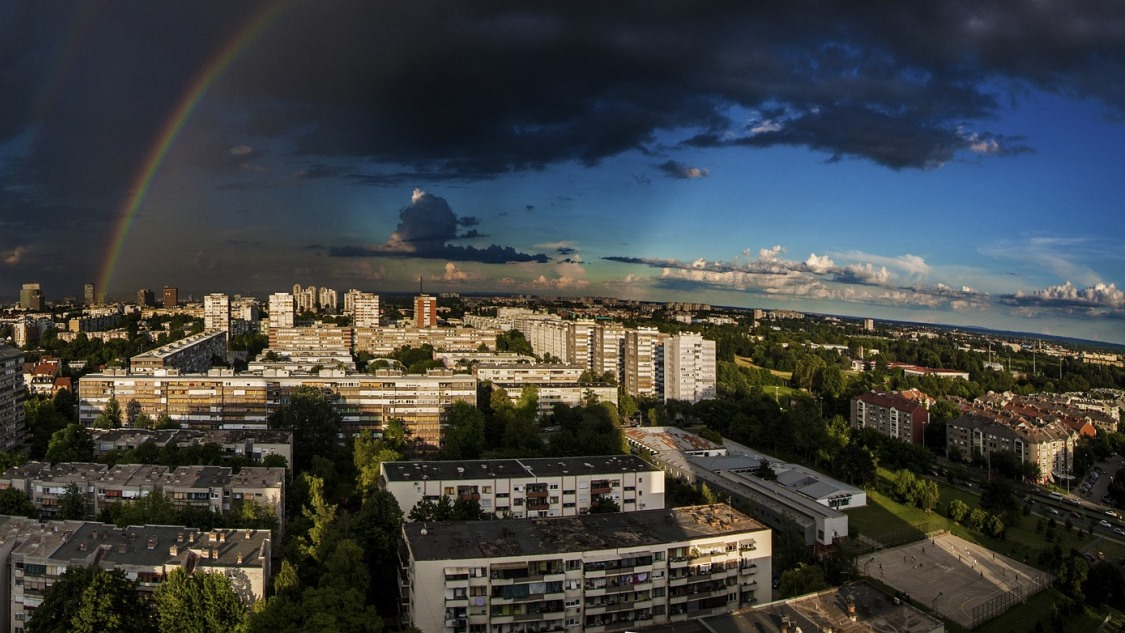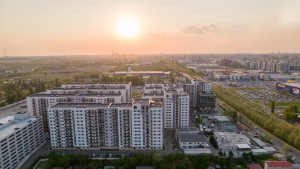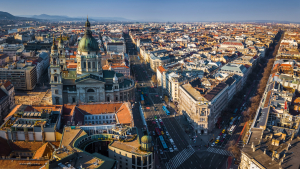
The composition of Croatia’s construction output is changing. While the residential segment may soon experience a slowdown, health-related construction - public and private renovations and new builds alike - is seeing a considerable boom, write Michael Glazer (SEE Regional Advisors) and Tatjana Halapija (Nada Projekt), Croatian members of the EECFA (Eastern European Construction Forecasting Association).
Construction continues strong in Croatia. The country’s State Bureau of Statistics announced earlier this month that construction permits issued in January 2023 were up 19.1% in number and 40.5% in value compared to January 2022. While permitting in Croatia can vary significantly from month to month, these data certainly suggest that the sector remains vibrant. So do the Bureau’s statistics for 2022 construction volume versus that for 2021. According to the Bureau, the value of completed construction work carried out by business entities in Croatia with 20 or more employees increased by 12.9% in 2022 compared to 2021, while the value of new orders increased by 27.1%.
But while construction as a whole remains robust, a number of sectors are weakening as changes in the composition of construction volume continue. Where once the tide of construction activity raised all sector’s boats, airport and highway construction has now given way to rail on the civil engineering side. On the buildings side, construction of residences may, at last, be cooling down from its white-hot heat of the last few years. The Statistics Bureau’s recent announcement of a 9.8% decline between January 2022 and January 2023 in the number of apartments for which permit applications were submitted suggests this.
So, paradoxically, does the 20.2% rise in the average price of new apartments between 2021 and 2022. Inflation clearly accounts for a substantial part of this increase. And supply may have shifted to higher-priced units. But it nonetheless appears that a significant increase in real prices for equivalent apartments has likely occurred. In this regard, the Governor of the Croatian National Bank recently pointed out that the volume of residential property sales is decreasing, something that he notes usually precedes a fall in prices. Tighter mortgage conditions and higher interest rates also likely played a role.
On the other hand, a type of construction that is booming but not getting the attention that it deserves is the construction of healthcare facilities. Both public and private facilities have been and are being built in unprecedented numbers. The subsector’s strength has come from both public and private projects and from both renovations and new builds. This is despite a push, so far not highly successful, on the part of the Croatian government to, in the name of efficiency, consolidate a number of healthcare facilities that now exist in low-population localities.
On the public side, significant construction has been ongoing for some time now. Among the larger projects have been the consolidation and expansion of the Rijeka Clinical Hospital Center, a multi-year, more-than-hundred-fifty-million euro project that is now in its third phase. This project includes the Hospital for Mother and Child, a new facility to consolidate gynaecology, obstetrics and pediatric facilities previously housed in outdated facilities in two different towns. In Zagreb, projects completed or already underway include the total reconstruction of the city’s Clinic for Infectious Diseases and the renovation of the Zagreb Clinical Hospital Center’s Jordanovac, Rebro and Petrova facilities, the Sisters of Mercy Clinical Hospital Center, the Merkur Clinical Hospital and the Children’s Hospital. Elsewhere, a new, 100-million-euro General Hospital was built in Pula, and various smaller, regional facilities were upgraded, including in Bjelovar and Varazdin.
While a good deal of Croatia’s public medical facility construction has been completed, much still remains to be undertaken. In addition to further upgrades to current facilities nationwide and the possible construction of a National Children’s Hospital in Zagreb, considerable work remains to be done to repair the damage caused by the two earthquakes that struck Croatia in 2020, including significant reconstruction at Zagreb’s Faculty of Medicine. The government is also pushing health tourism, with a minimum of €61 million to be invested in public and private projects in this field.
Private healthcare construction projects are also proliferating. Among those recently built are Akromion’s 10,000 sqm hospital for orthopaedics and trauma and Sveta Katarina’s 4,000 sqm facility, both in Zagreb. A variety of other facilities are in the planning stages, although their exact characteristics, e.g., as to size and in some cases even nature, remain either confidential or as yet undecided. The government’s increased focus on and funding of healthcare tourism is likely to significantly increase activity in the healthcare subsector.
As the Croatian economy evolves, particularly as it responds to Croatia’s entry into the Schengen Area and the Eurozone, more changes in the composition of construction volume must be expected. As an example, it is claimed that already one in three Croatian residences is bought by a foreigner. And the country seems to, at last, be being discovered as a manufacturing location, with Jabil, a major US-based manufacturer, building a large facility in Osijek. The consequences of these changes for total volume are hard to predict but are certain to occur.



